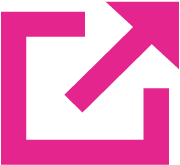Healthcare professionals, parents and young people are being urged to familiarise themselves with the signs of childhood stroke to help prevent potentially devastating effects, as a new clinical guideline from the Royal College of Paediatrics and Child Health (RCPCH) and the Stroke Association launches today.
Stroke in Childhood 2017 is a nationally developed evidence-based clinical guideline for all UK paediatricians and healthcare professionals involved in the regulation or practice of the care of children and young people who have had or are suspected of having a stroke.
Around 400 children in the UK have a stroke every year, leaving many with severe physical and mental impairments. Experts say that with better knowledge of the signs of childhood stroke amongst doctors and parents, and with clear guidelines in place for effective rehabilitation, children should receive diagnosis and appropriate treatment more quickly, minimising the risk of severe long-term health problems.
The extensive guidelines are the first to be truly multidisciplinary – and should be a useful tool for a range of professionals including therapists, psychologists, ambulance staff as well as those working in education.
The guidelines include signs for spotting strokes in children:
- Most children experiencing a stroke will have similar difficulties to those observed in adults suffering from strokes, specifically weakness of the face, one side of the body and difficulty with speech. These signs have been highlighted as part of the ‘FAST’ campaign for recognising stroke in adults but apply at all ages.
- Less commonly, childhood strokes may present with seizures or fits affecting one part of the body or, rarely, a new onset sudden severe headache.
- Many children affected by stroke will have non-specific signs of illness, such as a decrease in conscious level or vomiting.
The clinical guideline also includes details of what tests should be performed, how to diagnose and treat stroke and prevent recurrences. The entire rehabilitation pathway, from the initial period in hospital, through to going back home and to school and important periods of childhood transition, are covered in the guidelines.
The parent/carer guideline is a lay version of the guideline which provides information to parents, carers, and families of children and young people affected by stroke. The information is based on detailed clinical guidelines produced for healthcare professionals who are involved in the care of children and young people affected by stroke.







